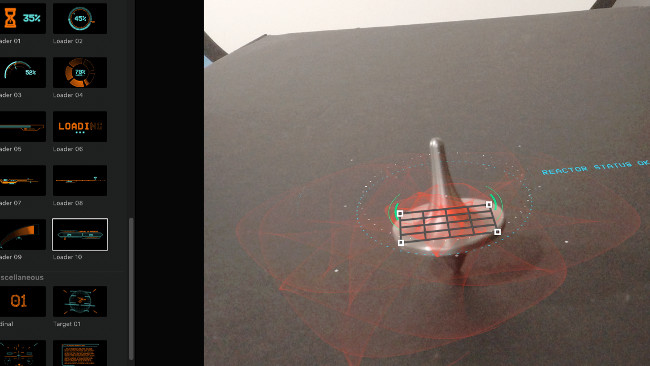
RedShark Review: MotionVFX's latest version of mHUD heads up display graphics plugin for FCP X.
MotionVFX puts mocha's tracking technology to good use with mHUD 2. It's an example of how effectively you can create composites if you have the right design, just enough controls to keep everybody satisfied and the right tracking engine. You can use mHUD 2 to make commercials more exciting or add spice to sci-fi movies.
Heads up!
First MotionVFX released mHUD, a set of static heads up display (HUD) elements. These HUD elements allow you to use Final Cut Pro X's Titles to create complete HUDs that have moving components, but don't move themselves. You could keyframe elements, but that was a bit tedious and sometimes just not easy to do. For HUD elements that must stay in one location — e.g. when you want to get across the atmosphere of a control room — the first release of mHUD was simple to use, yet allowed for intricate designs.
If you own mHUD 1 and buy mocha powered mHUD 2, trackable mHUD 1 designs will be automatically installed during the installation process. One reason why you would want to buy the slightly more expensive mHUD 2 collection is that it has more elements to choose from, but the mocha powered label is really the killer feature.
Efficent tracking
Mocha makes it relatively simple to create HUDs that seem to float in 3D space, moving together with an object or subject in your movie. As with other mocha powered Final Cut Pro X effects, MotionVFX has made sure the tracking itself won't take forever. Instead of Final Cut Pro X having to refresh the whole preview window for each tracked frame, MotionVFX uses a pop-up window that only shows you the tracking area while the process is running.
Even on my antique mid-2011 iMac, this guarantees fast results. mHUD 2 offers two tracking methods: plane and 2D. The latter makes sense if you don't need to correct for perspective. It offers the fastest tracking. The plane method is required if perspective comes into play. For example, my video clip of a spinning top I zoomed in on required the plane method to get the result I wanted.
Usage notes
Tracking is easy, most of the time. Sometimes, however, it's a pain, especially when the shape you're trying to track has no clearly defined planes or the lighting is causing reflections and specular highlights on the tracking surface. In those cases, the tracking rectangle starts to warp and, with it, the HUD shape. This is a problem you can't always recover from. A solution is to split up your title and track the whole thing in segments. That's not too time-consuming, but it proves tracking never is dead simple.
When you succeed in doing it right, the results can be stunning. On MotionVFX's own site you can see a few examples, but you can go really crazy with these HUDs. Many HUDs in mHUD 2 also contain text that you can replace with your own. The HUD components that make up the design are sensibly organised in layers so that each HUD design is just a starting point for your own unique compositions.
The verdict
mHUD 2 is a lot of fun to explore and comfortable to work with — even if you're not the compositing type. Self-discipline is the only thing standing between you and an over-HUD'ed project, as you won't feel restricted by its price either. MHUD 2 is yours for about €76 ($79).